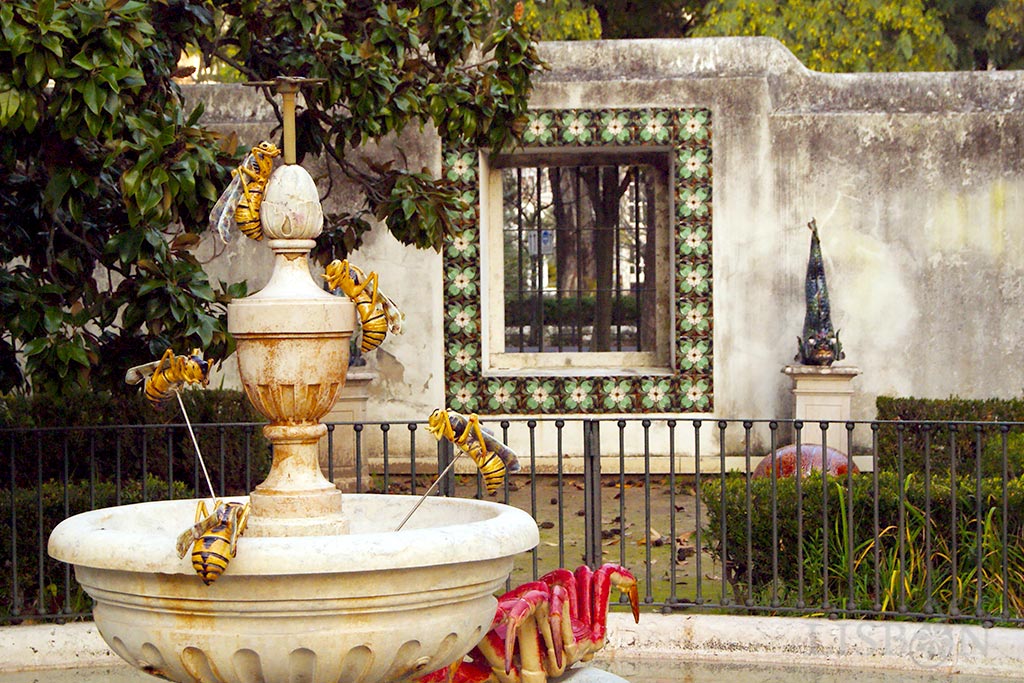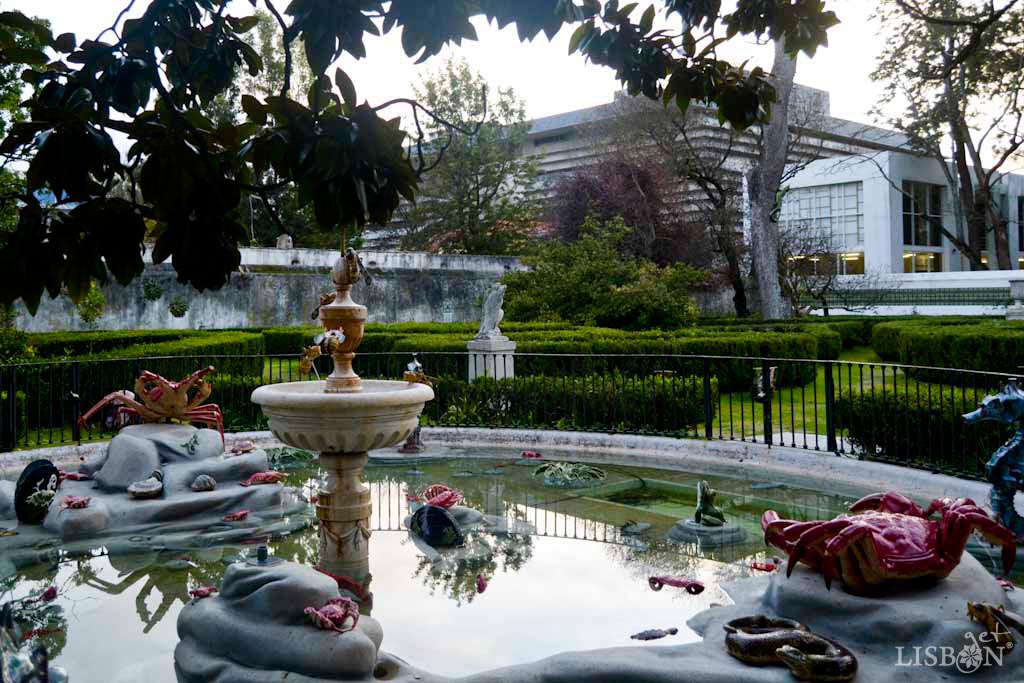Bordalo Pinheiro Garden is located at the far end of Campo Grande and it is a surprising world of the unusual and the fantastical that you’ll want to visit.
Integrated in a summer palace of the 18th century, where today is the headquarters of the Museum of Lisbon, we can find this walled garden that is more than a homage to the amazing plastic artist.
The Bordalo Pinheiro Garden originated from the idea of a business woman, was developed by a plastic artist, saved a centenary company from bankruptcy, sought to relaunch the then City Museum and today is open to the public free of charge.
Let’s dive in!

The Idea of a Bordalo Pinheiro Garden

The idea of creating this fantastic garden was by Catarina Portas, a journalist from Lisbon that around 2000 carried out a research project on old Portuguese products.
These products of national manufacture, in which a significant part is handmade, with their old packaging, were falling into disuse but were still present in the memory of the majority of the Portuguese people.
This project unleashed the creation of a brand to commercialise these items. Thus was born A Vida Portuguesa, a project that transformed Catarina Portas into a successful businesswoman and that already has several shops in Lisbon and in Porto.
This concept, that triggers a healthy amount of nostalgy, allowed to save hundreds of jobs and prevent bankruptcy of countless companies that until then were facing serious struggles.
One of these cases was the Bordalo Pinheiro Faience Factory in Caldas da Rainha, established in 1884 by the artist Rafael Bordalo Pinheiro, where among roof tiles and bricks his fantastic artistic crockery was also produced.
With the great project of the Bordalo Pinheiro Garden the factory found an opportunity, saving a valuable collection and cultural heritage.


The Execution of Bordalo Pinheiro Garden

In order to requalify and relaunch the then City Museum and simultaneously pay homage to Bordalo Pinheiro, the City Council of Lisbon put this idea into practice. For that they invited Joana Vasconcelos to execute this ambitious project.
The internationally conceited Portuguese plastic artist in ascension at the time, found a challenge on her level, seeing that, from her own words, “…The nature of [her] (…) creative process is based on the appropriation, decontextualisation and subversion of pre-existent objects and everyday realities. Sculptures and installations, which are revealing of an acute sense of scale and mastery of colour…”
A challenge up her alley, but so demanding that required a long process of research not only from the artist but also from the ceramists of the factory, both when it comes to methods and techniques used, and to the recovery of moulds and models that hadn’t been used for a long time.
The complexity of the execution of these extraordinary pieces were a very challenging task in the 19th century and the same happened in the beginning of the 21st century.
Thus were reborn pieces that in times decorated the Garden of Estrela and that were part of the decoration of the Portuguese Pavillion in the Exposition Universelle of 1889.
Manuel Gustavo Bordalo Pinheiro, Rafael’s son, continued his work in the same aesthetic line with new pieces of his own authorship, like the frogs in the first fountain we find at the entrance of the garden.
An Unusual and Fantastical World

Inaugurated on January 30, 2010 the Bordalo Pinheiro Garden features, among other beautiful trees, a magnificent exemplar of a Sophoro japonica, plus countless majestic peacocks that fill the space with colour and movement.
Between and on the Buxus sempervirens bushes, on the walls or on the trees we can find snakes, ocellated lizards, monkeys, cats, swallows, wasps, snails, giant mushrooms… and obviously the original tiles.
In two lakes we find large frogs, water lilies, turtles, fish, oysters, crabs, lobsters or sea horses.
A world that surprises us and reminds us of a fantastical universe like the one of Alice in Wonderland.
The imagination of Bordalo is clearly present in the pieces, as well as his spirit in the irony, provocation and attitude.
His physical presence is also present in two large medallions à la Della Robbia: a crown of polychrome flowers and fruits encircling the white profile of the artist over a blue background.
Dedicate a day to this great plastic artist by visiting the Bordalo Pinheiro Museum, the most fun museum of Lisbon, and the Bordalo Pinheiro Garden. Bring your children, take creative photos with the animal art pieces in the garden and you’ll see that this simple programme will become an unforgettable day.
| Never miss another article | Subscribe here |
The project getLISBON has been very rewarding and we want to continue revealing the singularities of fascinating Lisbon.
Help us keep this project alive!
By using these links to make your reservations you’ll be supporting us. With no extra costs!
• Look up the best hotels on Booking.com and get 15% or more off!
• Looking for a different experience? We can create a customised itinerary based on your interests. Contact us!
• Or if you prefer tours and other activities in various destinations, take a look at GetYourGuide.
• Save time and money with a flexible Lisbon Card!




